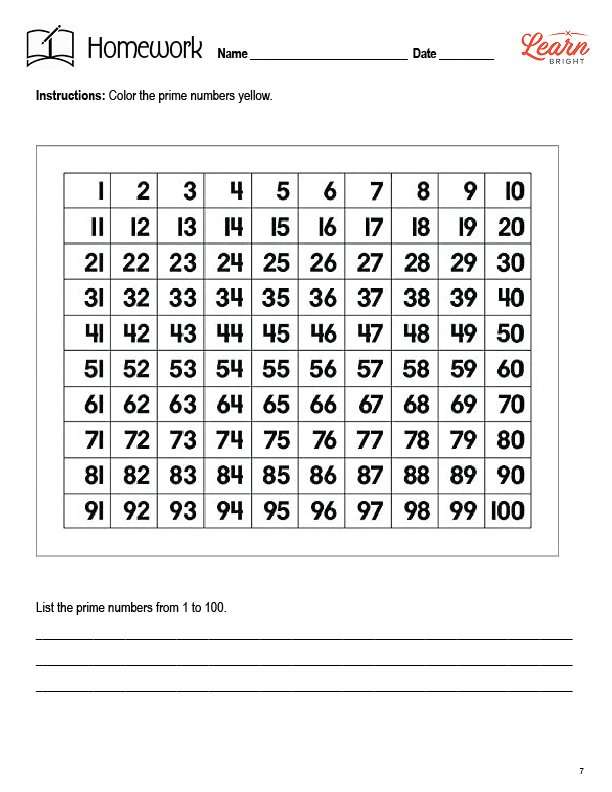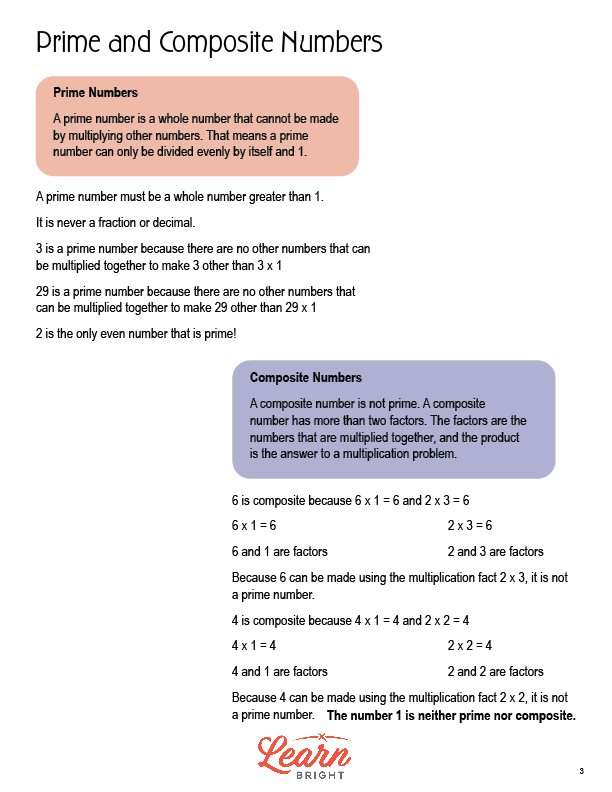Description
What our Prime and Composite Numbers lesson plan includes
Lesson Objectives and Overview: Prime and Composite Numbers helps students distinguish the difference between prime and composite numbers, and how knowing and identifying them can help them with mathematical operations. At the end of the lesson, students will be able to define prime and composite and identify prime and composite numbers and explain their use for mathematical operations. This lesson is for students in 4th grade.
Classroom Procedure
Every lesson plan provides you with a classroom procedure page that outlines a step-by-step guide to follow. You do not have to follow the guide exactly. The guide helps you organize the lesson and details when to hand out worksheets. It also lists information in the green box that you might find useful. You will find the lesson objectives, state standards, and number of class sessions the lesson should take to complete in this area. In addition, it describes the supplies you will need as well as what and how you need to prepare beforehand.
Options for Lesson
Included with this lesson is an “Options for Lesson” section that lists a number of suggestions for activities to add to the lesson or substitutions for the ones already in the lesson. One optional addition to this lesson is to have your students flip a number card and tell a partner why it is prime or composite. You can also have your students write about prime and composite numbers in their journal by asking them to explain the difference to an alien.
Teacher Notes
The teacher notes page includes a paragraph with additional guidelines and things to think about as you begin to plan your lesson. This page also includes lines that you can use to add your own notes as you’re preparing for this lesson.
PRIME AND COMPOSITE NUMBERS LESSON PLAN CONTENT PAGES
Prime Numbers
The Prime/Composite Numbers lesson plan includes one content page. Prime numbers are whole numbers that cannot be made by multiplying other numbers together. A prime number can only be divided evenly by itself and 1. Prime numbers must be whole numbers greater than 1. They’re never fractions or decimals. The number 3 is a prime number because no other numbers can be multiplied together to make 3 other than 3 and 1 (3 x 1 = 3). The number 29 is a prime number for the same reasons. 2 is the only even prime number!
Composite Numbers
Composite numbers are not prime. They always have more than two factors (the numbers that are multiplied together in a multiplication problem). The number 6 is a composite number because 6 x 1 = 6 and 2 x 3 = 6. 6, 1, 2, and 3 are all factors of 6. The number 4 is a composite number because 4 x 1 and 2 x 2 = 4. 4, 1, and 2 are factors of 4.
The number 1 is neither prime nor composite!
PRIME AND COMPOSITE NUMBERS LESSON PLAN WORKSHEETS
The Prime/Composite Numbers lesson plan includes three worksheets: an activity worksheet, a practice worksheet, and a homework assignment. You can refer to the guide on the classroom procedure page to determine when to hand out each worksheet.
CHOOSING SIDES ACTIVITY WORKSHEET
For the activity, students will choose a card from a pile and look at it. When instructed, they will go to the side of the room they believe corresponds to the number on their card, “Prime” or “Composite.”
CUT AND PASTE PRACTICE WORKSHEET
The practice worksheet asks students to cut out the numbers printed on the bottom of the worksheet and paste them in the correct column—prime or composite.
PRIME AND COMPOSITE NUMBERS HOMEWORK ASSIGNMENT
For the homework assignment, students will first look at a number grid containing the numbers 1 – 100 and color all of the prime numbers yellow. They will then list all of the prime numbers from 1 to 100.
Worksheet Answer Keys
This lesson plan includes answer keys for the practice worksheet and the homework assignment. If you choose to administer the lesson pages to your students via PDF, you will need to save a new file that omits these pages. Otherwise, you can simply print out the applicable pages and keep these as reference for yourself when grading assignments.









